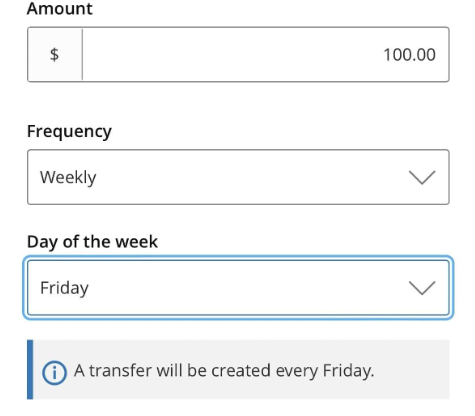When planning your financial expenses, it’s easy to list out your bills—this much for the mortgage, that much for the car payment, another amount for groceries, and so on. It’s common to think, "Anything left over is extra."
But what about including a savings plan as part of your monthly budget? Imagine setting aside $100 each week just for yourself, for instance. That would be $5,200 in a year. Over five years, you could have $26,000 saved up.
Paying yourself first could make a big difference in your financial future. Let's dive in and discover how you can prioritize your financial well-being!
1. Automate Your Savings
One of the easiest ways to pay yourself first is to automate your savings. You can set up an automatic transfer from your checking account to your savings account on the days you are paid. This way, you don't even have to think too much about it; your savings will grow without any extra effort because it will be part of your budget. By treating your savings like a non-negotiable expense, you'll be more likely to stick to your plan.
With Advia's 24/7 Digital Banking, setting up automatic payments is simple!
At Advia, we have the tools you need to set up automatic payments. First, ensure you’re enrolled in Digital Banking. If you’re not, it’s easy to get started – you’ll need to enter your information, then follow the steps to continue. For security, a secure access code will be sent via call, text message, or email. Enter the code and click “Submit.” We recommend not registering shared computers or devices.
Next, create a password, review the terms, and accept the agreement. You can access your account via Desktop or by downloading our mobile banking app.
Here’s an example of setting up an Automatic Savings Plan:
Let’s say your paychecks are directly deposited into your checking account and you want to automatically transfer $100 every week into your savings. To do so, simply select “Transfer Funds” to schedule your automatic transfer.

You can customize the frequency of transfers, with options such as weekly, biweekly, or monthly. You can also pick the day of the week you’d like to pull on. In our example, we’ll schedule a $100 transfer to the savings account every week:

With this easy setup, you’ve prioritized saving automatically! It’s a quick and hassle-free way to meet your financial goals. You can also change or cancel the automatic transactions if necessary.
2. Create a Budget That Works for You
Having a clear budget can help you see where your money is going and identify areas where you can cut back. Start by tracking your spending for a month and categorizing your expenses. Then, create a budget that prioritizes your savings. Remember, the goal is to live below your means and ensure you're consistently setting aside money for yourself.
In today’s tech-savvy world, there are plenty of budgeting tools available if you prefer digital solutions over pen and paper. With Advia, we offer budgeting tools right within our Digital Banking platform to make managing your finances even easier.
3. Find Balance: Cut Costs, Boost Savings
While there's nothing wrong with treating yourself here and there, cutting back on non-essential spending can significantly boost your savings over time. Simple swaps, like making coffee at home instead of buying it daily, or bringing lunch to work instead of eating out, can make a big difference.
Research supports this, too. According to Psychology Today, delayed gratification – resisting short-term temptations in favor of long-term rewards – is a key factor in financial success. By training yourself to delay unnecessary purchases, you’re not only saving money-- you’re also building a mindset that prioritizes your future. These small changes can add up to big savings over time.
Let’s break it down with a simple example: if you buy a cup of coffee at your favorite shop five days a week, at an average price of $4 per cup, you’re spending $20 per week, or around $80 per month.
Now, if you switch to making coffee at home four days a week, with the cost per cup averaging about $0.27, your total for home-brewed coffee would be just $1.08 per week. If you still treat yourself to a store-bought coffee once a week at $4, your new weekly total would be $5.08, saving you $14.92 each week.
That’s a savings of roughly $59.68 per month and about $716.16 per year—money you could easily redirect to your savings. Small changes like this can have a big impact over time.
As Always, Advia is here for you!
Advia is here to help you on your financial journey. Our mission is to provide real advantages for real people, like you. Be sure to visit our financial blog regularly for more insightful articles, expert advice, and the latest updates on managing your finances effectively. Together, we can help you reach your financial goals and grow your savings for a brighter future.

